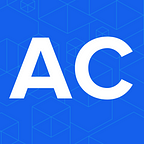yETH vault explained
Quick primer on how the vaults work, as there seems to be quite a bit of misinformation currently going around.
Where does the yield come from;
- Lending, assets are lent out via lenders such as Aave, Compound, and dYdX
- Trading, assets provided to Uniswap, Balancer, and Curve earn trading fees.
- Liquidity incentives, protocols such as Compound, Balancer, and Curve provide liquidity incentives, they provide additional incentives for liquidity
What risks are associated with this;
- Lending, since it is a lender, assets might not be available all the time, but that’s why lenders use utilization ratio. How this works, the closer the pool is to empty (maximum amount borrowed out) the higher the interest paid for it. This allows new assets to be provided (or borrowed assets to be returned). But the window does exist where provided assets exceed available borrowed assets.
- Smart contract, as always there can be bugs, exploits, and other flaws.
- Lack of trading activity, which means reduced fees
- Liquidity incentive price fluctuations causing unstable APY
yETH vault explained;
- yETH vault provides ETH to Maker to mint DAI.
- DAI is provided to yDAI (the yearn.finance DAI vault).
yDAI vault explained;
- DAI is provided as LP for curve.fi/y
- curve.fi/y LP tokens are locked in the gauge to receive CRV
We have seen a lot of misinformation around the yETH vault and its minted DAI vs available DAI. This is no different than a lender/borrower utilization ratio.
If you supply 100 tokens to a lender, and someone borrows 50 tokens. You can not withdraw your 100 tokens, but you can withdraw 50 tokens. When you withdraw 50 tokens then the borrower pays an additional premium, so other lenders are incentivized to add tokens or the borrower to repay their debt.
This is the base premise for all vaults, and yETH is no exception. There is however one difference, since yETH uses yDAI, the “lender” is in fact curve.fi.
As DAI in the pool becomes low, arbitragers sell DAI for (USDC, USDT, or TUSD). This adds DAI to the pool. So as DAI is removed, this makes it more valuable to trade in DAI. This is the same mechanism as explained for lenders and borrowers utilization ratios.
The only core difference here, is that in a normal vault, there is no debt. With yaLINK and yETH there is debt, this does add additional risk, since you need to have enough available funds to cover debt. This is why we maintain a ~200% ratio, so there is a ~50% buffer in case of lender/liquidity shortages.
Most systems have a maximum borrow buffer. This means a certain amount of liquidity minimum must be available in the system. The general rule is around ~25% (so borrowers can’t borrow more than this). For this reason the yETH vault was capped at ~60m, as this buffer is around ~$16m, which even if y pool halved in capacity, would still be available.
